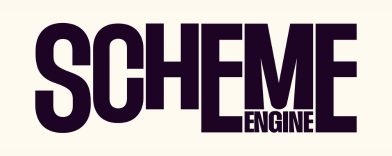
‘Blind Faith’: Ramadan Moon Sightings for the Visually Impaired

The period of Ramadan revolves around sightings of the moon. Its appearance dictates when you should start or stop fasting, and at what stage of the holy month you’re in. But what if you can’t see it?
For the second Ramadan running, Bank al Etihad and VML Jordan have launched their ‘Blind Faith’ campaign to integrate an excluded demographic into the cultural rituals they should rightfully share in.
Last year, the award-winning initiative created personal braille bracelets for the visually impaired. These 30-day wearable Ramadan calendars empowered them to experience the month’s spiritual journey alongside Muslims around the world by enabling them to physically feel the phases of the moon. This year, ‘Blind Faith’ has been transformed into a communal experience with the addition of a tactile and visual guide for the use of the whole family.
“It’s no longer just a tool for fasting, it’s a shared ritual,” says Raya AbuJaber. The creative director at VML Jordan shares more about the thought behind the campaign’s inclusive design in this interview with LBB’s Zara Naseer.

LBB> Can you tell us how the original ‘Blind Faith’ concept was born? What insights informed its development?
Raya> It all started with the Imsakiyeh: the Ramadan calendar every Muslim home relies on. It has all the fasting times and days of Ramadan, a special 30-day timetable.
But then we thought, it’s only useful if you can see it. For the blind community, it’s just another item they can’t use. And yet, Ramadan is deeply tied to time, to the sight of the moon, to watching the sun rise and set.
So, we asked, how can we make time something they can feel? That’s how ‘Blind Faith’ was born. A Ramadan calendar designed for touch, not sight.
LBB> The initial campaign won Jordan its first D&AD Pencil – but how was it received by everyday users?
Raya> The response was very emotional and we saw two reactions in particular. For people who lost their sight later in life, the bracelet reconnected them to a tradition they thought they’d lost. For those born blind, that simple circular shape helped them experience the moon for the first time. Something so symbolic of Ramadan had never been accessible to them before.
Beyond the blind community, it sparked a bigger conversation about inclusivity in everyday life.
LBB> How does this year’s iteration build on that campaign? What’s in the booklet and how does it broaden the campaign’s impact?
Raya> Last year’s bracelet was a personal experience. This year, we wanted to bring it into the home.
So, we introduced the ‘Blind Faith’ Booklet. It’s a tactile Ramadan guide designed to sit on a family table. It has: a braille lunar calendar to track the moon phases; Iftar and Suhoor times (starting and breaking fasting hours); and written information in Arabic for those who can see. It’s no longer just a tool for fasting, it’s a shared ritual.

LBB> Talk us through the look and feel of the bracelet and booklet – what informed the design?
Raya> Everything comes back to the circle. For the bracelet, we were inspired by wrist watches. Something wearable. Something familiar. For the booklet, we looked at traditional standing calendars, but we adapted it based on feedback from the blind community. They prefer flat designs that sit on a table, so we made it easy to read with pages that can be flipped through.
It’s not just about accessibility; it’s about designing something that feels natural in their daily lives.
LBB> Did you come up against any interesting challenges in bringing this campaign to life? How did you overcome them?
Raya> Printing braille isn’t like regular printing. It usually requires specialised machines, but we had to adapt it for our custom paper while keeping the embossing clear and durable.
Another challenge was the bracelet’s closing mechanism. It needed to be easy to wear without assistance, so the design had to be intuitive, adjustable, and secure, all while keeping the braille legible.
Through testing and refinements with the blind community, we found the right balance, ensuring it could be worn in the simplest way possible, giving users full independence.

LBB> How did you ensure that the ‘Blind Faith’ campaign would be understood as an authentic companion to the month of Ramadan? In what ways does it embody its values?
Raya> Ramadan starts with the sight of the moon. Even with all the technology in the world, Muslim countries still begin fasting only when the moon is sighted. It’s a tradition that has stood the test of time. But what if you can’t see?
‘Blind Faith’ brings that experience into their hands. The moon phases and the fasting times, it’s all about making Ramadan something they can feel, not just hear about. It stays true to the essence of Ramadan, where sight guides faith, by making it accessible to those who experience the world through touch.
LBB> How else are you working with Bank al Etihad to champion accessibility?
Raya> Bank al Etihad was the first bank to bring accessibility into an everyday topic like Ramadan, turning it into a conversation that had never been addressed before. It wasn’t just about banking, it was about showing up where inclusion was needed most.
Moving forward, we’re exploring new ways to rethink accessibility beyond just financial tools. We’re looking at how people interact with culture, education, and public spaces, finding opportunities to make accessibility more natural and embedded in daily life. The goal isn’t just to create one-off solutions, it’s to build a long-term approach that shifts how we think about inclusion. ‘Blind Faith’ was just the start.











